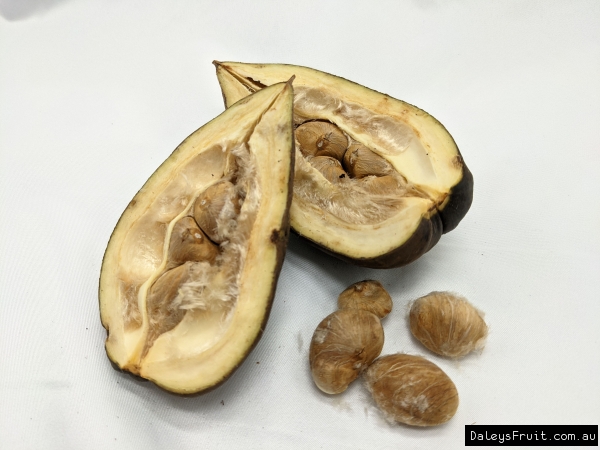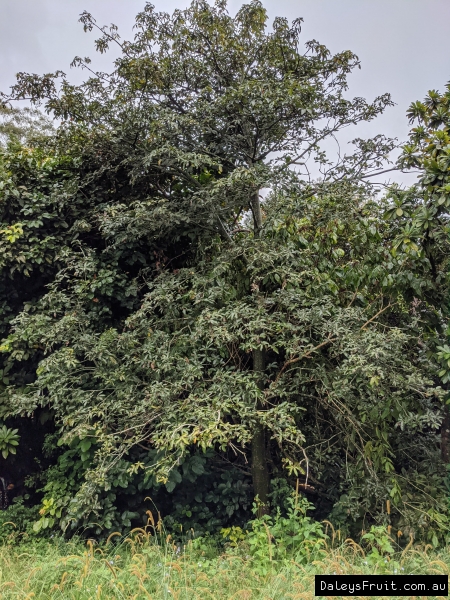![The nuts of the Guiana Chestnut By Albert Sittler [All Rights Reserved,Supplier of DaleysFruit.com.au]DescriptionGoesHere](https://plant.daleysfruit.com.au/trees/m/Guiana-Chestnut-11094.jpeg)
(1/7) The nuts of the Guiana Chestnut By Albert Sittler [All Rights Reserved,Supplier of DaleysFruit.com.au]DescriptionGoesHere By PersonWhoTookPhoto [All Rights Reserved, Supplier of DaleysFruit.com.au] (Photo Credits)
![Guiana Chestnut Ripe and opened ready to be taken out of the kernal]()
(2/7) Guiana Chestnut Ripe and opened ready to be taken out of the kernal
![Pachira insignis flowers]()
(3/7) Pachira insignis flowers By Albert Sittler [All Rights Reserved, Supplier of DaleysFruit.com.au] (Photo Credits)
![Mature Guiana Chestnut growing in the ground]()
(4/7) Mature Guiana Chestnut growing in the ground By Albert [All Rights Reserved, Supplier of DaleysFruit.com.au] (Photo Credits)
![A fully grown Guiana Chestnut Nut Tree]()
(5/7) A fully grown Guiana Chestnut Nut Tree
![Guiana Chestnut For Sale]()
(6/7) Guiana Chestnut For Sale
![Guiana Chestnut For Sale]()
(7/7) Guiana Chestnut For Sale
fullscreen1
Guiana Chestnut
Pachira insignis
Fragrant, stunning flowers distinguish the Guiana Chestnut. Makes a beautiful landscape tree. Native to estuaries and lake shores in the tropical rainforests of Mexico, Central and South America The seeds have been recommended for eating eaten either raw
... Read Moreor roasted, however recent research has indicated that there may be toxic compounds present that are not neutralised through cooking. When roasted or fried in oil they taste like chestnuts or cashews They have also been ground and used as a flour substitute when baking bread. The young leaves and flowers have also been cooked and eaten as a vegetable, however no mention is made of this in the research.It has also been suggested fungal organisms may be converting oils into inedible compounds. Production of nuts starts within a few years. The large, white, self-fertile flowers display spectacular clusters of 10cm cream-white stamens. The fruit is a woody green five-valved pod up to 30cm in length. The capsules that follow burst open when the seeds are ripe. The plant grows well in mild inland and coastal areas. The plant will tolerate brief exposure to low temperatures but won't tolerate frost. A frost-free location with some protection from hot, drying winds is the best choice for the plant. It will take full sun to partial shade. Malabar chestnuts are not overly fussy about soil as long as it is well drained. They are semi-deciduous. The flowers of the Guiana chestnut are spectacular, they emerge from foot long buds where they are almost hidden amongst the dense foliage. The long dark red brown coloured petals droop and disappear to show off the dramatic clusters of scarlet tipped stamens. The fruits that follow the flowers are football shaped large woody pods that can reach 30cm in length. The tightly packed nuts inside enlarge until the pods burst open to reveal them. The Guiana Chestnut does best in sites that are protected from drying winds, it can be grown in full sun or part shade and it requires frequent and generous watering. WARNING: SEEDS SHOULD NOT BE EATEN
Information on the related Pachira glabra
Other Names: Guyana Chestnut
$29.00 ($29.00-$49.00 choose a size)
Buy 1+ @$29.00ea usually:$39.00ea
Preferred Climate Tropical, Subtropical
Grown From Seedling
Max Height (when in the ground with good conditions) +10m
Plants required to Pollinate 1 (Self Pollinating)
Can it Handle Frosts? Likes Temps above 5deg
Amount of leaves in Winter? Some Leaves (Partly Deciduous)
Water Requirements Frequent Watering
Is it a Dwarf Fruit Tree? No (Full Size)
Time to Fruit/Flower/Harvest 2-3 Years
Sun or Shade Full (Sun:80%-100%)
Preferred Soil Type Poor Drainage (Clay)
Soil pH Neutral (6.6-7.3pH)
Fruiting/Harvest Months February, March, April, May
Create a Filter to find similar plants











![The nuts of the Guiana Chestnut By Albert Sittler [All Rights Reserved,Supplier of DaleysFruit.com.au]DescriptionGoesHere](https://plant.daleysfruit.com.au/trees/m/Guiana-Chestnut-11094.jpeg)



















